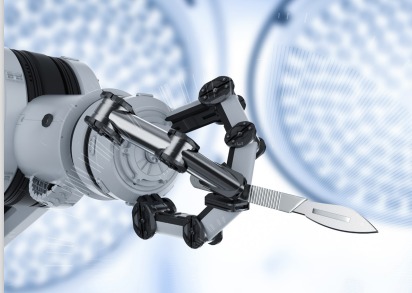The Future of Robotics in Health Care Delivery

SOURCE
Hospitals and clinics, pharmacies, rehabilitation centers, and other healthcare provider organizations are deploying robots to improve patient care outcomes and expand high-quality care to underserved populations worldwide. Demand for robotics solutions is rising and creating new growth opportunities for healthcare robotics OEMs. Innovative OEMs are combining advanced imaging, sensing, computer vision, and artificial intelligence (AI) technologies with unique physical robotic solutions to push the boundaries of what’s possible and transform the healthcare industry. Designing robots is hard but building them shouldn’t be. Overcoming the many hurdles that can block the transition of a new design into manufacturing with the quality and at the scale the industry and patients’ demand can be quite daunting.
 Healthcare providers use robots for a wide range of applications like performing delicate surgical procedures that extend and augment a surgeon’s capabilities. For example, in March 2019, a doctor in China used remote surgical tools to implant a stimulation device into the brain of a Parkinson’s patient on an operating table in a hospital that was nearly 2,000 miles away. Robots can also help patients who have suffered partial paralysis due to stroke, brain injury, cerebral palsy, multiple sclerosis and other neurological conditions recover their mobility, strength, coordination, and regain a high quality of life. These robots utilize sensors to examine human movement and positioning to conduct movement exercises while measuring and storing the limitations of a patient’s performance for use in long-term clinical evaluations. This assists therapists in the management of treatment planning and goal setting. In laboratories and pharmacies, robots can relieve humans of the stress of performing a variety of mundane and repetitive tasks such as scanning and sorting incoming medical test samples and filling prescriptions.
Healthcare providers use robots for a wide range of applications like performing delicate surgical procedures that extend and augment a surgeon’s capabilities. For example, in March 2019, a doctor in China used remote surgical tools to implant a stimulation device into the brain of a Parkinson’s patient on an operating table in a hospital that was nearly 2,000 miles away. Robots can also help patients who have suffered partial paralysis due to stroke, brain injury, cerebral palsy, multiple sclerosis and other neurological conditions recover their mobility, strength, coordination, and regain a high quality of life. These robots utilize sensors to examine human movement and positioning to conduct movement exercises while measuring and storing the limitations of a patient’s performance for use in long-term clinical evaluations. This assists therapists in the management of treatment planning and goal setting. In laboratories and pharmacies, robots can relieve humans of the stress of performing a variety of mundane and repetitive tasks such as scanning and sorting incoming medical test samples and filling prescriptions.
In many large hospitals, robots are being deployed to help their staff spend less time walking and more time treating patients.
The International Federation of Robotics (IFR) reports, in a typical 200-bed hospital, nurses and other staff members walk 400 miles per week while moving equipment and removing waste.
The IFR estimates that the use of Autonomous Mobile Robots (AMRs) to handle those duties significantly shortens the average distance a nurse must walk each day. Deployment of robots in these scenarios will ultimately free up nurses, allowing them to focus more of their time on patients.
“The key to OEMs’ success is understanding the challenges that may be present during the product development lifecycle, especially during the initial design phase, explained Kevin McFarlin, Engineering Director, HealthTech, Celestica. “Companies who do not anticipate and solve the challenges that will arise early in the product lifecycle will face significant delays to market, resulting in large financial premiums and a loss of market share in a rapidly evolving technical space.”
Space constraints, weight, power, controls, user interface, vision systems, software – all present unique challenges and are highly dependent on how the end-user will deploy the robot. Additionally, documentation, change management, supplier/supply chain management, testing/ validation, quality assurance, manufacturing and assembly present a myriad of issues.
To learn more about this important strategic growth driver for OEMs, download Celestica’s white paper from their website.











